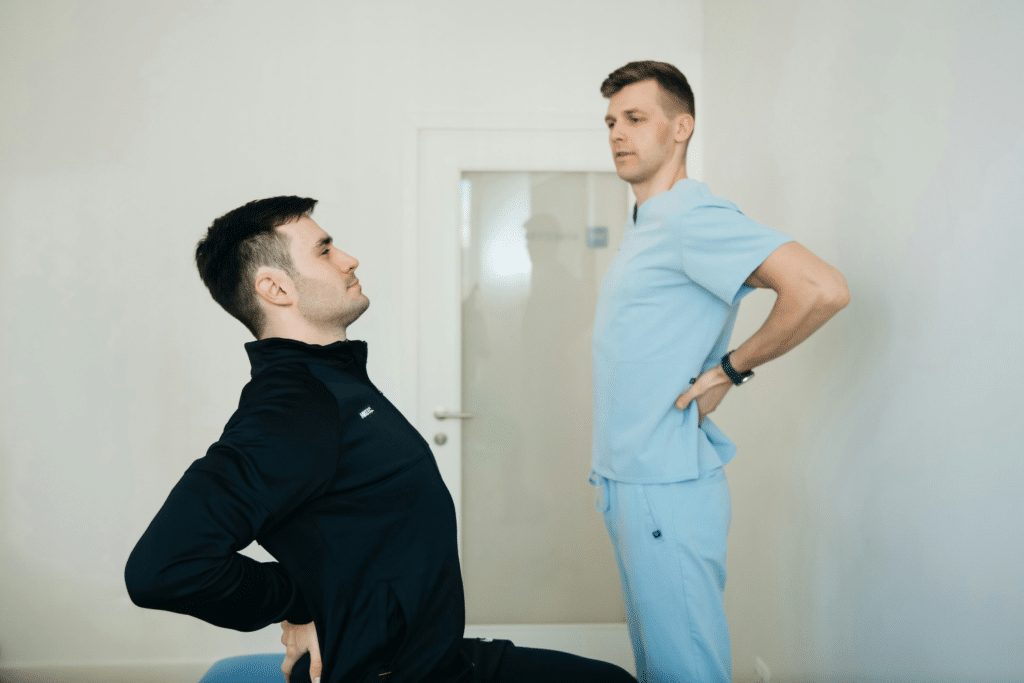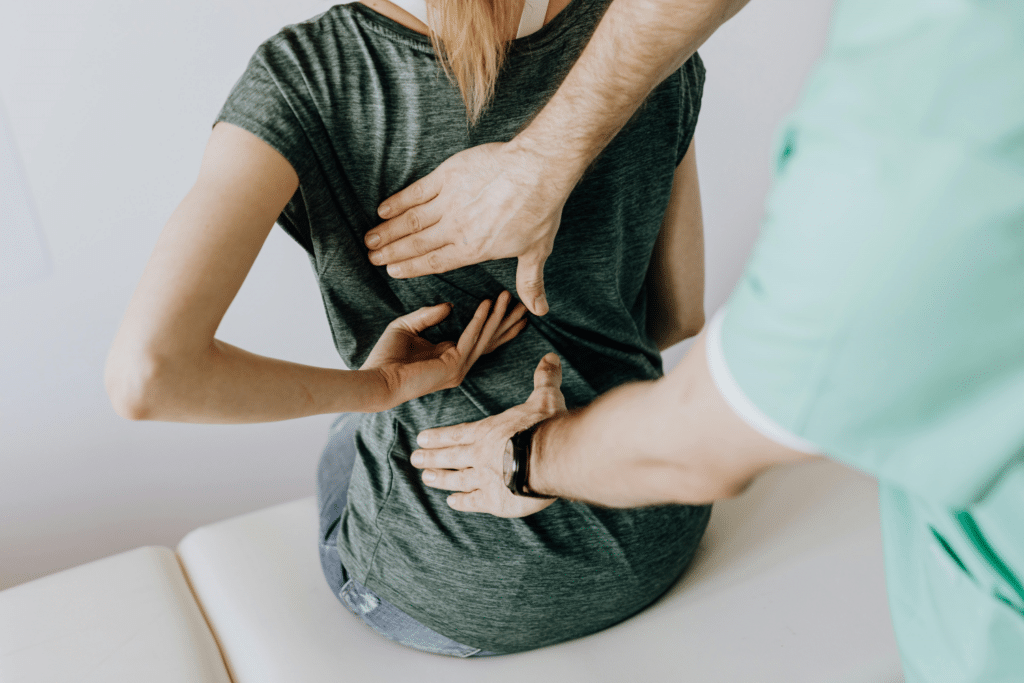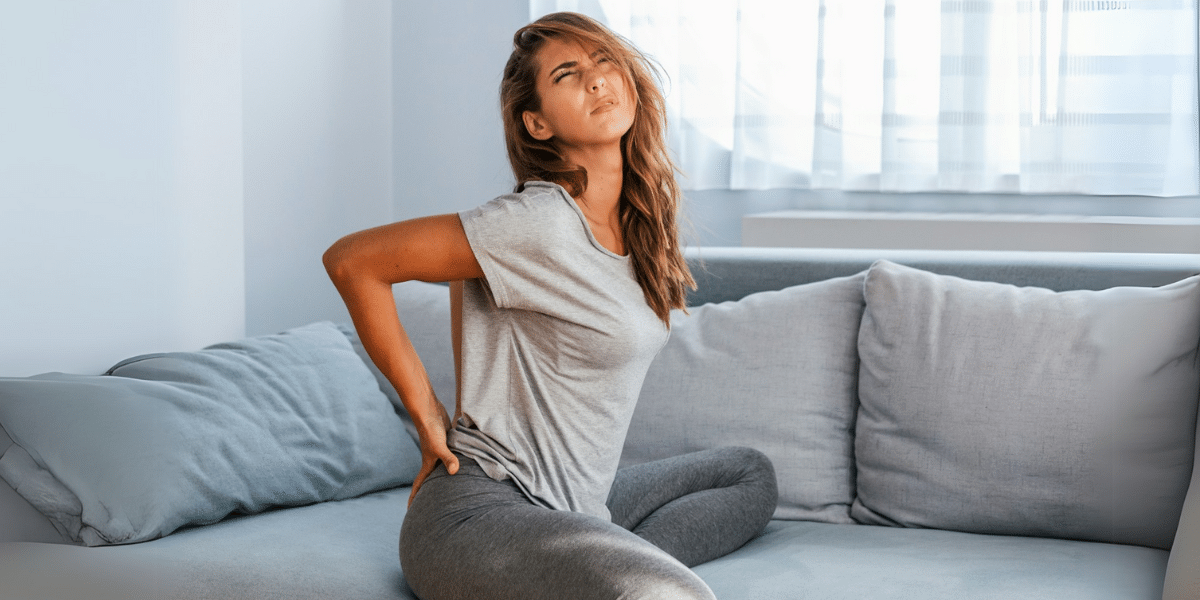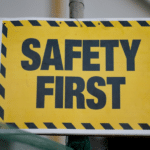Low back pain, also known as lumbar pain or lumbago, is a common condition characterized by discomfort, stiffness, and pain in the lower back region. Low back pain, which affects millions globally, is the most common reason to visit the doctor and for missed workdays as it also impacts our everyday movements and productivity. It has many types. It describes pain between the lower edge of the ribs and the buttocks. Some pain lasts for a short time, known as acute; some lasts a bit longer, known as sub-acute; and long-term pain is referred to as chronic. It can affect anyone, regardless of gender, age, and occupation.
Low back pain can result from various factors, including muscle strain, poor posture, a herniated disk, a sudden injury, arthritis, physical activity, or an inactive lifestyle. This article will provide effective tips to alleviate low back pain that can help you relieve LBP and prevent future issues.
Relieve Low Back Pain Naturally: 8 Strategies
Exercise and Muscle Stretching
Regular exercise, muscle stretching techniques, and yoga are crucial components in alleviating low back pain. The human body is made for movement: muscles and joints get nutrients and grow through movements. Taking gentle exercises, particularly those targeting the pain of the back, core, and gluteal muscles, may reduce pain and discomfort significantly. Proper exercise and stretching help strengthen and stabilize the spine, improving posture and reducing muscle strain. Some stretching exercises like hip flexor, piriformis, and lower back extensions increase flexibility, ease muscle tension, and promote relaxation. Various low-impact and gentle stretching techniques and exercises include pelvic tilts, knee-to-chest stretches, cat-cow stretches, planks, and bridging. Following these techniques regularly and adequately may alleviate the discomfort and get a pain-free life.
Boost Core Stability and Strength
Developing core stability and strength is pivotal for enhancing overall wellness, particularly in alleviating low back pain. Adequate core stability and core strengthening exercises target the abdominals and oblique and transverse abdominal muscles, which play a vital role in stabilizing the spine and helping maintain optimal movement patterns. Weak or imbalanced core muscles can lead to poor posture, alternate movement patterns, and increased strain on muscles, leading to pain and discomfort. By incorporating core strengthening movements and specific core stability exercises into your daily routine, 2-3 times a week, individuals can effectively reduce muscle pain and enhance overall physical function. Moreover, engage your core by stretching the belly towards the spine and sitting properly. In this way, it will enhance duration and intensity as your core strength improves.
Adjust your Posture and Ergonomics
Improving posture and ergonomics is an essential step for lessening lower back pain. It includes prolonged sitting and improper body mechanics. Maintaining optimal posture includes ensuring alignment of your head, shoulders, hips, and ankles and awareness of your body position. Specifically, focus on your workspace, which should be designed restfully. Your chair or seat should support the spine and feet. Practice standing straight with back shoulders and weight evenly on both feet. Take regular breaks to stretch and move.

Moreover, ergonomic adjustments also play an essential role. Position your chair at the appropriate height and lumbar support, use a supportive pillow to support the lumbar, and avoid bending and twisting your back during work or movements. Adopting these adjustments and incorporating effective habits can significantly reduce strain on the lower back and alleviate pain by improving long-term spinal well-being.
Sleep Better
Sleeping better is the natural factor specifically used to reduce low back pain. If you are not sleeping in a proper position, it can lead to back pain issues. During sleep, your body regenerates and repairs damaged tissues, strengthens muscles, and builds bone density. Quality sleep helps to regulate pain tolerance, improve inflammation and mood by reducing stress, and enhance spinal disc hydration and flexibility. It recovers muscles efficiently. So, individuals should aim for 7-9 hours of sleep every day. Follow a consistent sleep schedule, optimize a relaxing sleep environment, and avoid screens before bedtime. Also, adjust the cushion or pillow under your knees, and manage a soft and comfortable mattress for sleep.
Maintain a Healthy Weight and Stay Active
Maintaining a healthy weight and staying active is the key to unlocking a pain-free life. Being overweight can increase joint pressure on the spine and strain on your lower back muscles and discs, especially when you get older. But by achieving a balanced weight, you can reduce pressure on spinal discs and joints and soothe inflamed muscles. Also, staying active and engaging in some gentle movements leads to a faster healing process and helps to maintain weight.
Use Thermotherapy and Cryotherapy
Thermotherapy (heat therapy) and cryotherapy (cold therapy) are effective, non-invasive options for relieving lower back pain. Heat therapy, such as warm baths, showers, or electric heating pads, boosts blood flow, relaxes muscles, and eases stiffness, providing fast relief for lower back pain. On the other hand, cold therapy—using ice packs or cold compresses—helps reduce inflammation, numb pain, and relieve acute discomfort. Alternating between cold and heat can be beneficial: start with cold to reduce inflammation, then switch to heat to encourage relaxation. However, for excellent results and to ensure proper application, it’s advisable to consult an expert therapist.
Polish your Lifting Movements
Lifting something heavy is most likely to impure your back or twist to the wrong posture. That can lead to muscle pain. So mastering proper lifting techniques is crucial to cope with back pain. Improper lifting movement can lead to injury and muscle spasms. You should follow specific manual lifting techniques, including a stoop method of lifting with your back, a squat technique for lifting with your legs, and a semi-squat midway between stoop and squat. These will help to make lifting a no-risk factor LBP anymore.
Choose Proper and Comfortable Footwear
Proper and comfortable footwear is an important factor for LBP management. Fit and adequate shoes provide alignment and support to lessen lower back pain. Shoes with cushioning, arch support, and stability help distribute body weight evenly, improve posture and balance, and prevent excessive strain on the lower back. Ensure you wear adequate and comfortable footwear according to your activities, such as wearing sneakers for workouts or running and boots for construction work. Avoid high heels, flat shoes without arch support, and tight or ill-fitting footwear. Prioritizing supportive and comfortable shoes makes a significant difference in LBP relief.
Consult Professional
If your lower back pain is persistent and severe, it is ideal to consult a professional. Healthcare experts such as physical therapists, chiropractors, and orthopedic specialists can assess your condition and create a personalized treatment plan.

Healthcare professional services help patients strengthen their core, improve posture, and find lasting relief from low back pain.
Conclusion
Low back pain can be debilitating and severe, affecting daily activities. Incorporating these tips into your daily routine can significantly alleviate low back pain and improve overall health. By maintaining a healthy weight, regular exercise and stretching, core stability therapies, improving posture, taking regular breaks, managing stress, getting sufficient sleep, and consulting professionals for effective therapies and specific courses, individuals can effectively reduce low back pain.
Remember, proactive care and prevention are key; you can unlock a healthier future by adopting these habits and seeking expert guidance from healthcare professionals, such as physical therapists, orthopedic experts, and core trainers.
Disclaimer: This content is for informational purposes only and is not intended as medical advice, nor does it replace professional medical expertise or treatment. If you have any concerns or questions about your health, always consult with a physician or other healthcare professional.
Published by: Martin De Juan



















